Archive for September 2012
Here’s to Rachael Carson: The First “Hysterical Housewife”
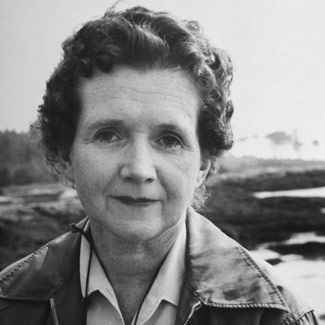 50 years ago this month, Rachel Carson's Silent Spring was published and immediately created a national controversy. It's difficult to put the book in its true historical context now because we take so much of its message for granted, as well as the right of a woman scientist to get it published. But there's no question that in 1962 it was a very subversive act for many different reasons.
50 years ago this month, Rachel Carson's Silent Spring was published and immediately created a national controversy. It's difficult to put the book in its true historical context now because we take so much of its message for granted, as well as the right of a woman scientist to get it published. But there's no question that in 1962 it was a very subversive act for many different reasons.
There's an argument to be made that Carson didn't invent the modern American environmental movement. That it was the result of many different factors and people. All true. But there's also a compelling case that Carson's fight on behalf of her scholarship became the classic template for how citizens and industry and government would interact with each other in response to any environmental challenge coming from the grassroots for the next half-century.
Exhibit A: The New York Times Magazine piece this week on Carson. Consider:
1) She was the first to popularize the notion that we have a fundamental right to air and water that won't kill us.
“We are rightly appalled by the genetic effects of radiation. How then, can we be indifferent to the same effect in chemicals that we disseminate widely in our environment?
“If the Bill of Rights contains no guarantee that a citizen shall be secure against lethal poisons distributed either by private individuals or by public officials, it is surely only because our forefathers, despite their considerable wisdom and foresight, could conceive of no such problem.' She advocated for the birth of a grass-roots movement led by concerned citizens who would form nongovernmental groups that she called “citizen’s brigades.
As Carson saw it, the federal government, when in industry’s thrall, was part of the problem. That’s one reason that she didn’t call for sweeping federal regulation. Instead, she argued that citizens had the right to know how pesticides were being used on their private property."
2) She was the first to criticize our "modern" way of life as being self-destructive at a physiological level.
When she described the dangers of DDT and other pesticides, she described the threat as "poisons," not "chemicals."
“Silent Spring” was more than a study of the effects of synthetic pesticides; it was an indictment of the late 1950s. Humans, Carson argued, should not seek to dominate nature through chemistry, in the name of progress. In Carson’s view, technological innovation could easily and irrevocably disrupt the natural system."
As she finished the book, she was diagnosed with breast cancer. This gave her writing a more personal edge it probably would not have had otherwise. A biographer is quoted in the Times piece as saying, “She was more hostile about what arrogant technology and blind science could do."
“No one,” says Carl Safina, an oceanographer and MacArthur fellow who has published several books on marine life, “had ever thought that humans could create something that could create harm all over the globe and come back and get in our bodies.
Theo Colborn, an environmental health analyst and co-author of a 1996 book, “Our Stolen Future,” about endocrine disrupters — the chemicals that can interfere with the body’s hormone system — points out that Carson was on the cutting edge of the science of her day. “If Rachel had lived,” she said, “we might have actually found out about endocrine disruption two generations ago.”
3) She was the first to specifically identify young mothers as a key environmental demographic.
At a time when women were still second-class citizens and didn't have much economic clout, Carson specifically wrote in a way to get her female audience motivated to take action. She brought a moral message to what they were seeing in the everyday consequences of DDT use. Here's her writing about a squirrel killed by pesticides:
“The head and neck were outstretched, and the mouth often contained dirt, suggesting that the dying animal had been biting at the ground. By acquiescing in an act that causes such suffering to a living creature, who among us is not diminished as a human being?”
As the article points out, this was exactly the same kind of moral messaging that made Uncle Tom's Cabin the book that started and won the Civil War. Carson knew that women were the key to not only the DDT fight, but to every major environmental cause, and social justice movement. Next time you go to a grassroots environmental meeting or event, look around at the ratio of women to men and decide if she was wrong. Better yet, take a look at who the chemical industry is targeting with their advertising.
4) She was the first private citizen targeted for attack by the chemical industry.
This was the first time an entire industry specifically targeted a person for what they were writing and saying about the environmental and public health impacts of their product.
"Velsicol, a manufacturer of DDT, threatened to sue both Houghton Mifflin and The New Yorker. And it also tried to stop Audubon from excerpting the book in its magazine. The personal attacks against Carson were stunning. She was accused of being a communist sympathizer and dismissed as a spinster with an affinity for cats. In one threatening letter to Houghton Mifflin, Velsicol’s general counsel insinuated that there were “sinister influences” in Carson’s work: she was some kind of agricultural propagandist in the employ of the Soviet Union, he implied, and her intention was to reduce Western countries’ ability to produce food, to achieve “east-curtain parity.
The well-financed counterreaction to Carson’s book was a prototype for the brand of attack now regularly made by super-PACs in everything from debates about carbon emissions to new energy sources. “As soon as ‘Silent Spring’ is serialized, the chemical companies circle the wagons and build up a war chest,” Souder says. “This is how the environment became such a bitter partisan battle.”
In a move worthy of Citizens United, the chemical industry undertook an expensive negative P.R. campaign, which included circulating “The Desolate Year,” a parody of “A Fable for Tomorrow” that mocked its woeful tone. The parody, which was sent out to newspapers around the country along with a five-page fact sheet, argued that without pesticides, America would be overrun by insects and Americans would not be able to grow enough food to survive."
Does any of this sound familiar?
But her courage in the face of the industry's deluge gave others courage, and it still does so now. Think it's hard to do this work in 2012? Try taking on the Status Quo as a single woman with terminal cancer in 1962.
She didn't live long enough to see the multitude of legacies she left behind, but all of us are affected by them. Her call to arms produced the first real wave of popular environmentalism in the US that went by that name. Thanks Rachel.
Imagine That: Local Regulation of Polluters
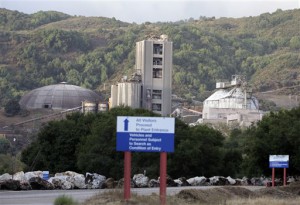 From San Francisco comes word that the area's largest Mercury polluter, the local Lehigh-Heidelberg Cement plant, may be the subject of tougher LOCAL air pollution regulations.
From San Francisco comes word that the area's largest Mercury polluter, the local Lehigh-Heidelberg Cement plant, may be the subject of tougher LOCAL air pollution regulations.
In 2011, the kiln spewed 260 pounds of Mercury into the local airshed and new regulations being proposed for the plant by the Bay Area Air Quality Management District would address not only this pollution, but emissions of dust, ammonia, dioxins, smog pollutants, and hydrocarbons.
In part, the new local rules are being spurred by EPA's own updating (and delaying) of its own air pollution rules for the nation's cement kilns. In part, local pressure from the public is driving their consideration. Bay Area for a Clean Environment collected over 1800 signatures demanding the new more stringent rules.
In California regional air boards are the prime shapers of air quality planning and policy, tailoring measures to their own geographical boundaries and problem areas. Imagine the 10-county DFW non-attainment area for smog (Collin, Dallas, Denton, Ellis, Johnson, Kaufman, Tarrant, Parker, Rockwall, Wise,) having its own air quality agency with the power to enforce new anti-pollution measures without having to get Governor Rick Perry's permission. Local control also means more opportunity for local citizens to have input rather than being blown off by ideologues in Austin intent on scoring political points rather than cleaning the air.
As we've noted before, if DFW officials really want cleaner air, they're going to have to get it themselves.
New Free Service Provides Local Environmental Alerts
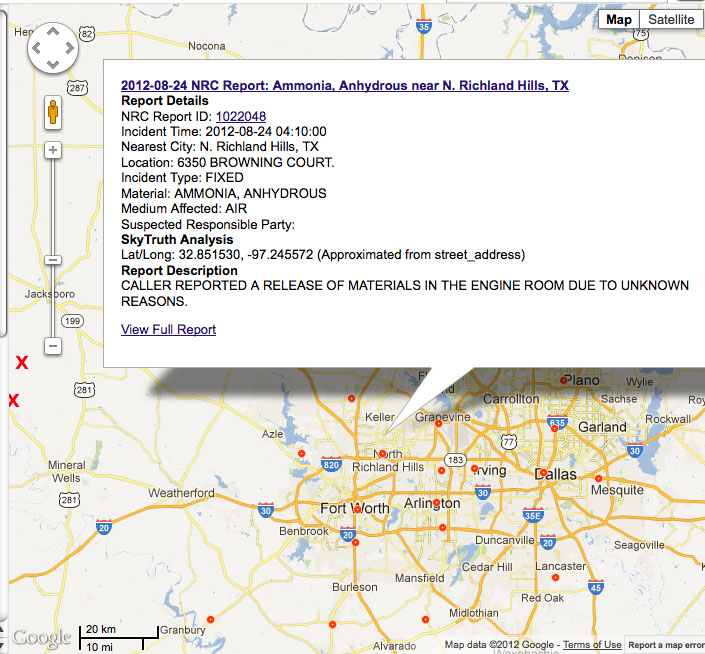 We were just speaking of how invaluable local blogs are and here's a great example. From Susan Read and the Westchester-Grand Prairie Community Alliance comes word of an invaluable service that allows you to track reported events like spills, accidents, and investigations in your area.
We were just speaking of how invaluable local blogs are and here's a great example. From Susan Read and the Westchester-Grand Prairie Community Alliance comes word of an invaluable service that allows you to track reported events like spills, accidents, and investigations in your area.
"Skytruth" is a free subscribtion service that promises to "delivers real-time updates about environmental incidents in your back yard (or whatever part of the world you know and love)."
The SkyTruth alert system is a free service open to the public that provides daily updates of environmentally significant incidents by geographical area. You can browse the most recent incident reports on a map or in Google Earth, and you can also subscribe to a personalized feed of incident reports via RSS or email
The alert feed currently contains reports generated from ongoing SkyTruth investigations, combined with selected reports from the the National Response Center that have been processed by SkyTruth's automated expert system to clean up problem data and add additional SkyTruth commentary and analysis.
No word on who or what is funding it, or on any Board of Directors or staff. But the infomation feeds are legit and timely. You pick the area you want Skytruth to monitor by zooming in and out on a Google map until you pick the boundaries and clicking. It's pretty darn easy. Check it out.
Former Bush EPA Regional Administrator Endorses Off-Sets in Dallas Gas Ordinance
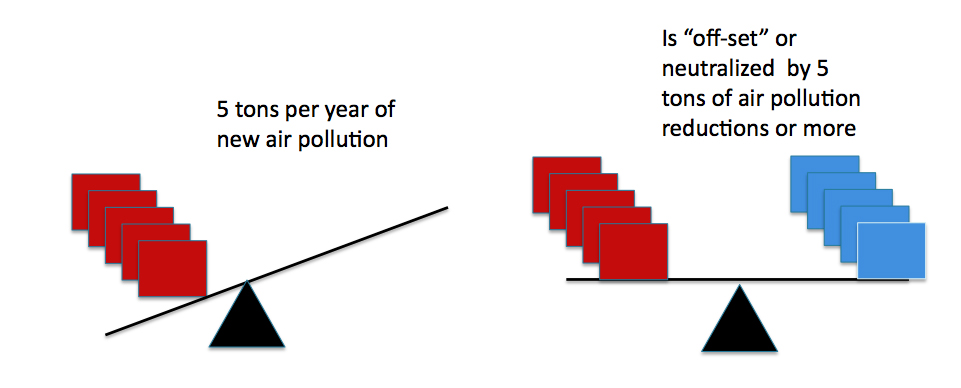 Many of you know Richard Greene as the former Arlington Mayor who was tapped by President George W. Bush to become Regional Administrator of the EPA in Dallas in 2003. Unlike many other Bush appointees, Green was not an ideologue. He was an administrator. And he lived in the area he was serving, and had already had stints as an Arlington Planning and Zoning Commissioner and Arlington Star-Telegram publisher. It didn't hurt that he could call the President up and shoot the breeze about the baseball team they both had an interest in.
Many of you know Richard Greene as the former Arlington Mayor who was tapped by President George W. Bush to become Regional Administrator of the EPA in Dallas in 2003. Unlike many other Bush appointees, Green was not an ideologue. He was an administrator. And he lived in the area he was serving, and had already had stints as an Arlington Planning and Zoning Commissioner and Arlington Star-Telegram publisher. It didn't hurt that he could call the President up and shoot the breeze about the baseball team they both had an interest in.
Greene was a supporter of Downwinders' Green Cement campaign, and promoted its use as part of the larger 2006-7 DFW clean air plan. His support gave legs to what was then just an idea, a concept. He helped transform it into the kind of de facto regional purchasing policy that contributed to TXI and Ash Grove's decisions to close their dirtier old wet kilns, and in the process reduce hundreds of thousands of tons of air pollution each and every year.
So it was a kind of a big deal when Greene took the time to write the Dallas Morning News a letter endorsing the idea of "off-sets" for air pollution from natural gas mining and processing – the newest de facto regional air quality strategy Downwinders is promoting to rein-in gas emissions that are rising rapidly. Published on September 12th here it is in its entirety:
City should set drilling example
As the City Council prepares to write a new ordinance regarding urban oil and gas drilling, Dallas has a unique opportunity to once again set a regional clean air example, while also tapping into a needed energy source.
Natural gas is an important part of the nation's energy mix. However, when it comes to metropolitan areas like D-FW that are in nonattainment of the Clean Air Act, those circumstances should be crafted so as to not allow new emissions to cancel out previous hard-won reductions.
The kinds of facilities that operators use to produce and process natural gas are diffuse over a large area. They're not centralized like a power plant or a factory, and so under current federal law these facilities, no matter how concentrated or connected, are not covered under the traditional offsets rule.
Dallas could change that with an innovative expression of local control. The city could require reasonable offsets for new industries that emit a significant amount of air pollution, including natural gas operators, as part of a new urban drilling ordinance.
Since local gas producers project little impacts from their operations, the burden should not be a deterrent to drilling here.
Richard Greene Arlington,
former EPA regional administrator
Remember, this is from George Bush's personal appointee to run the Regional EPA.
When citizens met with Dallas councilwoman Linda Koop – the council's go-to person on all things air quality – she had a hard copy with her. She reportedly had "no problem" with off-sets, but thought it might take more time to establish than the council has before voting on a final ordinance. Citizens expressed confidence it could be done sooner and at last word, she was trying to arrange a meeting between city and EPA staffs to talk about the mechanics of such an approach. Slowly but surely, common sense seems to be gathering momentum.
Many thanks to Mayor Greene for his support of what we think is a market-based innovative approach to solve a regional air quality problem. We hope his endorsement has the same impact as the last one.
Compare and Contrast
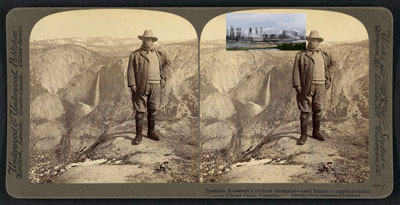 Read this obituary for Russell Train, the Republican conservationist creator of the Environmental Protection Agency, and then read the current Republican position on his creation.
Read this obituary for Russell Train, the Republican conservationist creator of the Environmental Protection Agency, and then read the current Republican position on his creation.
RIP: The DMN “Energy and Environment” Blog
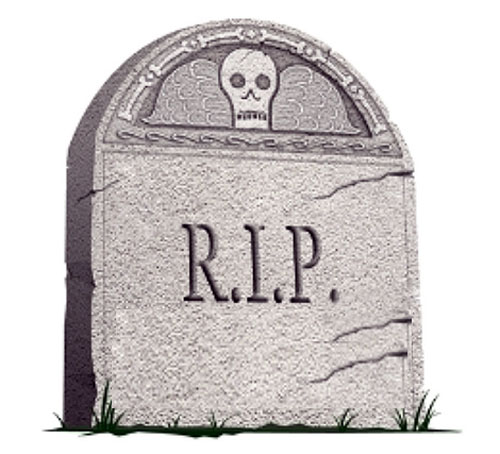 We didn't notice it until after the fact, in part because its owners quit noticing some time ago, but the Dallas Morning News' "Energy and Environment" blog is no more.
We didn't notice it until after the fact, in part because its owners quit noticing some time ago, but the Dallas Morning News' "Energy and Environment" blog is no more.
Back in 2006-2007, it started out well enough, fueled by the opposition of the paper and the City of Dallas to Governor Perry's plans to fast-track as many as 17 new coal-fired power plants. It served as a platform for the paper's reporting of that story from Business Section reporter Elizabeth Souder, as well as writings from Editorial Board writer Colleen McCain, and Environmental Reporter Randly Lee Loftis.
But as that story went away, so did the blog's flow of entries. While Souder would post, Loftis was an infrequent contributor and McCain left the paper some time ago. Pieces had been coming in at a rate of one every 2-4 months. As a place to go to find out things about local DFW environmental goings-on, it had ceased to be relevant years ago.
Still, its demise is another sign of how scant the mainstream coverage of environmental issues is in the nation's fourth largest metropolitan area. Forget about the Star-Telegram – it doesn't even have a reporter assigned to do environmental beat coverage. Channel 8's Project Green is as much a self-promotional vehicle as it is information clearinghouse. Loftis remains the Last Environmental Reporter standing in DFW but the infrequency of his articles and absence at major events would challenge that title.
Only the alternative weeklies – The Dallas Observer and Ft. Worth Weekly – have maintained their coverage of environmental issues and risen to the crisis created by the invasion of urban gas drilling. They're providing much of the coverage that you might have seen in the dailies only a decade or so ago.
And of course, there's the citizen blogosphere. Here in North Texas we have Sharon Wilson's Blue Daze – probably the nation's closest thing to an online national grassroots meeting place for gas drilling skeptics and opponents. Sharon gets more hits in a day than many of the mainstream media's stories get in weeks. In her wake she's inspired a slew of homegrown fracking sites throughout the Barnett Shale and beyond that mix micro reporting on their neighborhood battles with macro analysis and links to national articles. Want to find out about fracking in Grand Prairie? You'd best take a look at Susan Read's Westchester-Grand Prairie Community Alliance. Need to get an update on the fight over Dallas' new gas drilling ordinance? You should check out the Dallas Residents at Risk page for the latest news you won't find anyplace else.
There's Green Source for calendar and event listings, and they've been upping their reporting of North Texas environmental controversies, taking on West Nile arieal spraying, Dallas gas drilling, and the Midlothian cement plants that are so near and dear to our own hearts here at Downwinders.
And there's us. We know we've been spotty of late, but we're bet getting back on track with regular daily postings to try and give you information that's interesting, and useful. Keep checking. We'll keep posting.
New Clean Energy Campaign Kicks-Off Wednesday Night
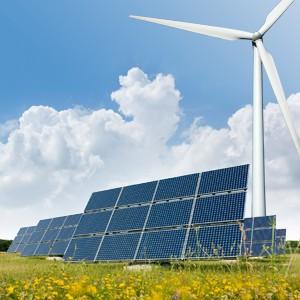 In case you haven't heard, there's a privately-funded organization that's come to Texas designed to put young people with in interest in environmental organizing out in the field to do good works while getting paid a small stipend. It's called Greencorps, and while it's 20 years old, this year is the first time any Greencorp members have shown up in Dallas-Fort Worth.
In case you haven't heard, there's a privately-funded organization that's come to Texas designed to put young people with in interest in environmental organizing out in the field to do good works while getting paid a small stipend. It's called Greencorps, and while it's 20 years old, this year is the first time any Greencorp members have shown up in Dallas-Fort Worth.
In particular, newly graduated Biology major and GreenCorp member Lisa Trope is here on behalf of Sierra Club's Clean Energy Works campaign that seeks to promote wind, geothermal and solar alternatives to fossil fuels. She's trying to get people to sign a petition to have the Texas Public Utility Commission commit itself to renewable energy target amounts and dates – much like the legislature did a decade ago or more in an effort that saw the birth of the Texas wind energy industry.
Surrounded by gas mining and processing pollution and downwind from coal plant emissions, DFW could use all the clean energy it could get. Lisa is having her first organizing meeting tomorrow night – Wednesday, September 19th, from 7 to 9 pm at the Bachman Lake Public Library's Black Box Auditorium. Do you remember your first organizing experiences? Please attend, make Lisa feel at home, and welcome her into the small DFW community of people who give a damn.
Breaking: Human Body More Nuanced than Science Thought
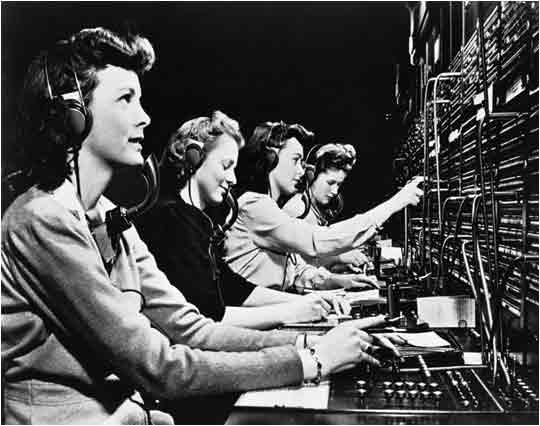 How many times have you heard a local neighbor of a downwinder say something like, "I've lived here all my life and never once got sick from that stuff," even while the block they live on might be a cancer hotspot?
How many times have you heard a local neighbor of a downwinder say something like, "I've lived here all my life and never once got sick from that stuff," even while the block they live on might be a cancer hotspot?
There are lots of reasons for pollution not affecting everyne equally. One is the new science of "Epigenetics," which has discovered that an ancestor's exposure to environmental toxins that never affected them could skip a generation or two and result in disease or illness many decades past the original transgression.
Via the New York Times this week comes another explanation that concludes there are a lot more ways environmental toxins can affect DNA behavior other than corrupting the DNA itself. What scientists believed were mostly unused parts of the human genome turn out to be huge, complex switchboards for the controlling of all kinds of things related to DNA growth, maintenance, and damage.
"Now scientists have discovered a vital clue to unraveling these riddles. The human genome is packed with at least four million gene switches that reside in bits of DNA that once were dismissed as “junk” but that turn out to play critical roles in controlling how cells, organs and other tissues behave. The discovery, considered a major medical and scientific breakthrough, has enormous implications for human health because many complex diseases appear to be caused by tiny changes in hundreds of gene switches.
The findings, which are the fruit of an immense federal project involving 440 scientists from 32 laboratories around the world, will have immediate applications for understanding how alterations in the non-gene parts of DNA contribute to human diseases, which may in turn lead to new drugs. They can also help explain how the environment can affect disease risk. In the case of identical twins, small changes in environmental exposure can slightly alter gene switches, with the result that one twin gets a disease and the other does not."
The article makes the connection between past research that found a likelihood to get certain diseases among those with corrupted DNA patterns, but until now, no one knew that those patterns were from the operation of on/off switches for genes in the DNA. This research, by building a "Google Map" of these switches, fills in the blanks and provides lots of new evidence of how subtle changes that fall short of breaking or damaging DNA can still result in harmful health effects, perhaps including many that are initiated by environmental toxins.
2011 was the Worst Year for Smog since 2006 in DFW. 2012 Is One Bad Air Day Away Matching It.
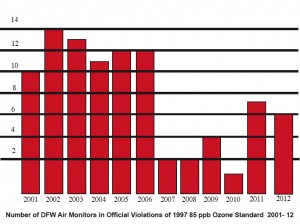 Last year's air quality death spiral in DFW was sometimes explained away as an anomaly because of the severe drought the entire state was going through.
Last year's air quality death spiral in DFW was sometimes explained away as an anomaly because of the severe drought the entire state was going through.
So what's the explanation this year?
With yesterday's high ozone levels sending a 6th monitor into an exceedance of the old 1997 85 parts per billion smog standard, DFW is just one more bad air day away from matching last year's dreadful results. Today's ozone forecast says there should be no high levels of smog in DFW today, even as the temperature reaches for a record high. But then again, they weren't predicted Thursday either.
To give you some idea how rapidly things have gone downhill for air quality in DFW the past two years, just look at the annual numbers. From 2007 to 2010, we had a total of nine monitors register official exceedances of the 85 ppb standard. That's about two monitors a year average. This turns out to be the closest we've ever come to actually meeting the standard. Officials could argue with some justification that air quality was slowly getting better.
On the other hand, during the last two years, we've had 13 monitors record exceedances of the 85 ppb standard, an average of 6.5 a year, and 2012's ozone season is not yet over. You could add up all the exceedances from the four years between 2007 and 2010 and still not equal the number we've experienced in just the last 24 months.
This is not progress.
TCEQ and the gas industry have argued for some time that gas mining couldn't possibly be contributing to smog problems since smog levels were going down as drilling was increasing in DFW. But that's not true anymore. As gas drilling has moved further and further east – into the heart of the non-attainment area, we've seen in increase in ozone concentrations, in exceedances in monitors, and monitors in the eastern part of the Metromess exceeding the standard that hadn't done so in five to seven years.
Meanwhile all other major source categories for air pollution have been decreasing their emissions. Cars, power plants and cement kilns are actually releasing less air pollution now than they were ten or 20 years ago. Only one large specific source category has increased its annual tonnage significantly over that same time – oil and gas.
Is it just a coincidence that smog is getting worse as oil and gas pollution skyrocket – not only in the Barnett Shale that surrounds DFW on three sides, but by all the new oil and gas sources now southeast of Dallas as part of the Haynesville Shale play that are blowing their pollution toward us most of the ozone season? There are now so many gas compressors in Freestone County, less than 75 miles away from the Dallas County line, that their emissions represent the equivalent of over 4 new Big Brown coal plants. What do you think the impact on air quality would be of four large new coal plants located immediately upwind of DFW? Might it look a lot like it does in 2012?
Could it be that the dirty mining of "clean" natural gas is making it impossible for DFW to meet the old 85 ozone standard, much less the new 75 ppb one? That the Devil's Bargain so many former and current elected officials made with the gas operators to grab the cash and run is now coming back to bite them and us in the air quality butt? That was certainly the conclusion of the study we publicized this last Tuesday from the Houston Advanced Research Center:
"Major metropolitan areas in or near shale formations will be hard pressed to demonstrate future attainment of the federal ozone standard, unless significant controls are placed on emissions from increased oil and gas exploration and production….urban drilling and the associated growth in industry emissions may be sufficient to keep the area (DFW) in nonattainment."
It's time for local officials to replace those cash registers in their eyes with gas masks. Because of their rush to make money, they didn't pause to understand how so much new industrial activity could produce smog just like the bad ol' days. They were being paid not to understand. And now 5 to 6 million people who still can't yet breathe safe and legal air are paying the price.
Lead Exposure Linked to Gout
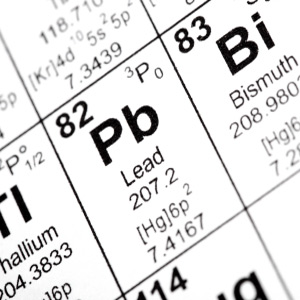 Since Downwinders was asked to help Frisco residents relocate a 50-year old lead smelter last year, there's been one study after another linking lead exposure to a variety of new health effects. This month it's gout.
Since Downwinders was asked to help Frisco residents relocate a 50-year old lead smelter last year, there's been one study after another linking lead exposure to a variety of new health effects. This month it's gout.
"Even relatively low levels of lead in the blood may be linked to an increased risk of gout, a painful form of arthritis, researchers reported Monday.
"All of this suggests there's no such thing as 'safe' or 'acceptable' lead levels," said study leader Dr. Eswar Krishnan, of Stanford University School of Medicine in Palo Alto, California.
No one is going to be doing a health survey in Frisco anytime soon looking for increased rates of gout, or liver damage, or cancer, or lower IQ levels. Once a facility like the Exide lead smelter puts poisons into the air, they cannot be recalled, nor the damage they create. Because we don't know all the damage their poisons can create. But that doesn't keep companies or governments from approving the release of them into the air. Years later, studies are done and we all learn about a new kind of damage they can leave. But the damage cannot be removed, or mitigaged or even compensated, because there's no direct connection to Exide left to identify.
And that's why we must make sure we know what's being released into the air for us and our families to breathe before we're exposed to it.
